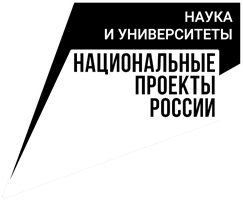The seminar is devoted to various aspects of the application of supercomputer modeling methods for solving weather and climate forecasting problems.
Seminar Leader:
- Sadovnichy V.A., academician, rector of Lomonosov Moscow State University
Co-leaders of the seminar:
- Wilfand R.M., Doctor of Technical Sciences, Scientific Director of the Hydrometeorological Center of Russia
- Dobrolyubov S.A., Corr. RAS, Dean of the Faculty of Geography, Lomonosov Moscow State University
- Lykosov V.N., Corr. RAS, chief scientist Institute of Computational Mathematics, Russian Academy of Sciences, Head. Laboratory of Supercomputer Modeling of Natural and Climatic Processes of RCC MSU
- Stepanenko V.M., Doctor of Physics and Mathematics, Deputy Director of RCC MSU
Scientific Secretary of the seminar:
- Mortikov E.V., Ph.D., Researcher of RCC MSU
PROGRAM
17:30 GMT+3
| A. Baklanov | Department of Science and Innovation of the World Meteorological Organization (WMO) |
SEAMLESS FORECASTING: FROM THE EARTH SYSTEM TO THE INTEGRATED SYSTEMS OF URBAN HYDROMETEOROLOGY, CLIMATE AND ENVIRONMENT
The new generation of integrated atmospheric dynamics and composition models is based on a seamless Earth system modeling (ESM) approach to transition from individual model components to seamless hydrometeorology-atmospheric-composition models to solve problems in the areas of weather, climate and environmental protection, whose interests, applications and problems now overlap. This approach addresses several aspects of seamless connectivity and integration, which are discussed and demonstrated in the presentation:
- Time scales: from seconds and present weather forecasts to seasonal and climate time scales;
- Spatial scales: from street canyon to global scale (up- and downscaling);
- Processes: physical, chemical, biological, social;
- Components of the earth system: atmosphere, hydrosphere, litho- and pedosphere, ecosystems / biosphere;
- Various types of observations and modeling tools: fusion of observations and models, data processing and assimilation, model verification;
- Links to health and social outcomes, impact, assessment, services and end users.
A state-of-the-art, seamless, unified modeling system that enables a single platform to operate at full scale represents significant advances in both science and computational efficiency. Global challenges such as rapid urbanization, pandemics, climate change, environmental degradation require a revision of current understanding and traditional methods. The new UN Urban Agenda and Sustainable Development Goal (SDG) 11, which focuses on sustainable urban development, in particular climate and environmental sustainability of cities, requires collaborative interdisciplinary efforts, integrated research and the development of new integrated high-resolution models and techniques.
The presentation explores the new concept of smart and sustainable cities in the area of climate and the environment and analyzes the current evolution of research and development from specific air quality and urban weather forecasting systems to comprehensive integrated modeling systems for sustainable cities. It provides an overview and analysis of the results of a number of key international projects with the participation or under the leadership of the author (for example, WMO GURME and IUS, CityIPCC, FUMAPEX, MEGAPOLI, EuMetChem, MarcoPolo, PEEX) and demonstrates the benefits of this approach on examples of individual megacities and the development of an integrated system modeling Enviro-HIRLAM. The main gaps, problems, applications and achievements, the main trends and research needs for the further development of such systems are discussed. The goal is to create urban integrated systems that respond to the special needs of cities through a combination of dense observing networks, integrated high-resolution forecasts, early warning systems for multiple hazards, disaster response and climate services. This approach gives cities the tools they need to reduce emissions, build prosperous and resilient communities, and achieve the SDGs.

